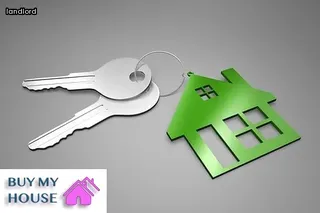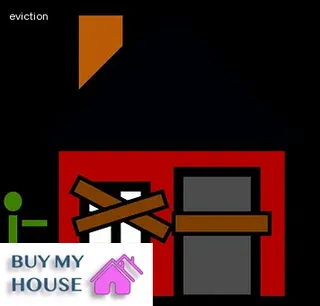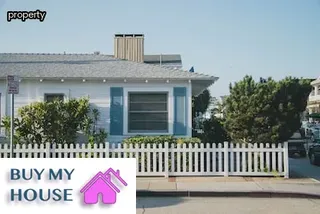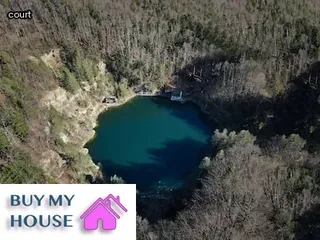In Minnesota, the eviction process is a legal matter that must be handled carefully by both landlords and tenants. It's important to understand the rights and responsibilities of both parties in order to ensure a smooth process.
This begins with understanding the timeline for an eviction - typically, it can take anywhere from two weeks up to two months for an eviction notice to be filed, served, and executed. During this time, landlords must follow legal guidelines regarding how the notice is presented and how much time tenants are given to vacate the property.
The landlord must also provide tenants with any documents needed to contest or settle the eviction in court if necessary. On their part, tenants should ensure they remain informed throughout the process as well as adhere to all requirements set forth by their landlord.
Being aware of their rights and obligations will help them make informed decisions moving forward.

In Minnesota, the eviction process can take from several weeks to several months, depending on various factors such as the tenant's rights and responsibilities. Landlords need to understand the essential steps to legally evict a tenant in Minnesota and be familiar with their own rights and responsibilities as well.
Depending on the reason for eviction, landlords must provide written notice to tenants before filing an eviction lawsuit in court. The type of notice may differ based on circumstances such as non-payment of rent or violation of lease terms.
Once written notice is provided, tenants have a certain number of days to vacate or pay the owed balance before the landlord files an action with court. If the tenant does not vacate or pay within that time frame, then landlords may file an Unlawful Detainer Action (UDA) with court which includes filling out paperwork and paying a filing fee.
After filing, landlords must notify tenants via service of process which requires delivering a copy of the UDA at least seven days prior to any court hearing. If tenants do not appear in court or if they are found liable, then they will be ordered by judge to vacate within a certain timeframe.
If tenants fail to comply with that order, then landlords may request assistance from court officers who will physically remove them from the premises.
Serving the tenant notice is a key part of the eviction process in Minnesota. It is important for landlords to ensure that all legal requirements are met when it comes to serving the notice.
This includes providing details about the eviction and reasons for it, as well as advising the tenant of their rights and responsibilities. It is also necessary for landlords to provide basic information such as date and time of service, name and address of person served, and method of delivery.
Furthermore, if applicable, landlords must inform tenants of any assistance available from state or local authorities. Additionally, tenants must be made aware they may be able to challenge an eviction in court and how long they have until they must respond to the notice; this period varies depending on the type of lease agreement.
Following these steps will help ensure a smooth eviction process in Minnesota while protecting both landlord and tenant rights.

In Minnesota, an eviction process typically takes one to two months. The grounds for an eviction are based on several factors, including the tenant's failure to pay rent, lease violations, and illegal activity (such as drug possession).
It is important that landlords fully understand their rights and responsibilities when initiating an eviction. Illegal evictions may include attempting to evict a tenant without a court order or charging a tenant more than the legal amount of rent.
Landlords should also be aware of their obligations regarding proper notice before filing for eviction. Tenants must receive written notice at least seven days in advance informing them of the reason for the eviction and their right to contest it in court.
If a landlord does not follow these procedures, they can face stiff penalties from the court. It is essential that both landlords and tenants understand the laws surrounding evictions in Minnesota in order to ensure that all parties are treated fairly throughout the process.
When landlords in the state of Minnesota decide to file an eviction complaint, they must submit the paperwork to their local court. This eviction complaint will include a summons and a copy of the lease agreement or rental contract signed by both parties.
Once these documents have been submitted, the court will issue a date for a hearing. The tenant is required to be served with notice of this hearing at least five days before it takes place.
When the tenant appears at the hearing, they are given an opportunity to respond to the landlord's claim and present any evidence they may have. If the judge finds that there is cause for eviction, they will then issue an order for possession which allows the landlord to forcibly remove the tenant from the property if necessary.

Once the eviction process is complete in Minnesota, landlords have the right to pursue possession of their property. State law requires landlords to obtain a writ of recovery and use it to regain control of the property.
A writ of recovery can be obtained from the court after a tenant has been served with an eviction notice and failed to comply with it. The court will then provide a date for execution of the writ at which point a sheriff or other qualified person will help evict the tenant from the premises.
If necessary, any forcibly removed possessions must be stored until they are claimed by either landlord or tenant. During this time, landlords are also responsible for ensuring that all relevant paperwork is filled out correctly so that there is no legal dispute over ownership of the property after an eviction.
In Minnesota, the timeline for an eviction process can vary greatly depending on various factors such as the tenant's response time, preparation of paperwork and court availability. In general, most evictions take anywhere from 1 to 3 months to complete.
The process typically begins when a landlord serves notice to the tenant that they have violated their rental agreement or failed to pay rent. If the tenant does not respond or comply with the notice within the amount of time specified by law, then a landlord can file an eviction lawsuit against them.
Once the lawsuit is filed, it is sent to the court for review and if approved, a summons will be issued and served to the tenant by law enforcement. If after being served with this summons, the tenant still fails to comply with their lease agreement then a hearing will be held in court where both parties are allowed to present their case before a judge who will make a decision on whether or not an eviction order should be issued.
If an eviction order is given then law enforcement will help enforce it and the tenant must vacate the property within a certain amount of time. It is important that landlords and tenants understand their rights and responsibilities throughout this process in order to ensure that everything goes as smoothly as possible.

Showing evidence in court can be an important part of the eviction process in Minnesota. It is important for landlords to provide proof of rental agreements and other documents that demonstrate why an eviction is necessary.
Tenants must also provide evidence that they are meeting their legal obligations, such as rent payments or other terms of the lease agreement. Landlords should also be aware of their rights and responsibilities when it comes to eviction proceedings.
Free resources for landlords include legal aid services, landlord-tenant law clinics, and public libraries, which may be able to provide legal advice or answer questions about the eviction process in Minnesota. It is important to remember that the amount of time needed to complete the eviction process can vary depending on the specific circumstances and evidence presented in court.
Putting your portfolio on DoorLoop can be a great way to streamline your financial management and take advantage of the various benefits it offers. Signing up for an account is easy, with just a few steps to complete the process.
After you've created an account, you'll have access to tools like budgeting, asset tracking, and performance analysis. Plus, you'll be able to link directly to any bank accounts or investment accounts for real-time data updates that keep your portfolio up-to-date.
When you're ready to make a change, DoorLoop also offers customizable features like automated investing and trading recommendations. Overall, DoorLoop simplifies the process of managing your money while giving you more control over how you want to handle it.

DoorLoop is an automated platform that can help landlords and tenants save time during the eviction process in Minnesota.
With DoorLoop, landlords can quickly and securely request a tenant's rental history, submit a notice to vacate, and even submit documents for court proceedings.
Additionally, DoorLoop offers a demo feature so potential users can experience how simple it is to use the software.
By using DoorLoop's automation capabilities, landlords and tenants can save time on tedious paperwork while still ensuring their legal rights are protected throughout the entire eviction process.
Evictions in Minnesota can be initiated for a variety of reasons. Most commonly, evictions are sought due to late rent payments or tenant violations of the lease agreement.
Landlords may also pursue eviction for non-payment of utilities or property damage. Eviction notices must be issued by the landlord and must comply with state laws regarding content and delivery.
A notice to comply must include specific language outlining why the tenant is being evicted, the amount of time they have to correct the violation, and a date by which they must vacate if the violation is not addressed. In some cases, landlords may provide an opportunity for tenants to fix the problem before an eviction is filed in court.
However, this option is not required by Minnesota law and is solely up to each individual landlord’s discretion.

Accessing free downloads on DoorLoop for eviction processes in Minnesota is easy. With the click of a button, you can access documents, checklists and forms to help you through the process.
Checklists are available to ensure that landlords and tenants both understand their rights and responsibilities throughout the eviction process. To start, landlords will need to provide tenants with the appropriate legal documents detailing why they are being evicted; this paperwork should include information regarding tenant rights and any applicable laws or regulations.
Tenants must then respond within a specified time frame outlining their response to the landlord's actions. From there, it is up to a court of law to determine if an eviction is necessary or not.
Documentation such as rental agreements and lease contracts may also be needed as evidence in court proceedings. Free downloads on DoorLoop can provide all of these materials in one convenient place so that landlords and tenants have everything they need to understand their rights and obligations during this difficult time.
By signing up for DoorLoop, you are agreeing to the Terms of Service and Privacy Policy, which outline the rights and responsibilities of landlords and tenants. These terms provide clarity on how long an eviction process may take in Minnesota, outlining what is expected of each party throughout the process.
The Landlord Tenant Act provides a timeline that must be followed when evicting a tenant, which includes the required notice period prior to filing for eviction, as well as any appeal rights available to a tenant. Additionally, DoorLoop outlines various fees associated with the eviction process that can be collected from the tenant such as court costs or late fees.
By signing up for DoorLoop you are also agreeing to abide by all state laws and regulations related to landlord-tenant law, thereby ensuring that both parties understand their rights and obligations throughout the eviction process.

Making more money with DoorLoop is a great way for landlords to maximize their profits while still providing quality housing. DoorLoop is an online platform that streamlines the eviction process and can make it easier for landlords to get paid faster.
By understanding Minnesota's rights and responsibilities for landlords and tenants, you can ensure that you are following all of the laws and regulations when it comes to evictions. Knowing how long the eviction process takes in Minnesota is key to making sure that you are maximizing your income potential with DoorLoop.
Depending on the situation, it may take anywhere from a few days to several weeks before an eviction is finalized. It's important to understand the tenant’s rights during the eviction process as well as knowing what documents need to be filed, such as a notice of termination or a notice of possession order.
Landlords should also be aware of any legal consequences including possible fines or court costs if they fail to follow each step in the eviction process correctly. Knowing these details can help landlords make smarter decisions when using DoorLoop and ensure that they are receiving the most money possible from their rental properties.
It is important for landlords and tenants in Minnesota to understand the difference between unlawful detainer and summary process actions when it comes to the eviction process. Unlawful detainer, also known as forcible entry and detainer (FED), is a court action that allows a landlord to take possession of their rental property from a tenant who has unlawfully taken possession.
Summary process is a court action where a landlord can terminate a tenant’s lease and evict them from their rental property. Both require the filing of paperwork with the court, service of documents on the tenant involved, and a hearing before a judge.
In an unlawful detainer action, if the judge orders eviction the sheriff will physically remove the tenant from the premises. A summary process action can result in an order of eviction but does not allow for physical removal by law enforcement; instead, it allows for damages or back rent to be collected through wage garnishment or other methods.
Understanding these two processes is key when navigating an eviction in Minnesota.

When it comes to evicting a tenant, Minnesota landlords must understand the various strategies that can be applied before resorting to this measure. It is important to remember that there are rights and responsibilities for both parties involved in an eviction process, and it helps to take proactive steps when dealing with non-compliance from tenants.
For example, setting expectations early on by having a clear lease agreement is key. If a tenant violates the terms of the lease, landlords should act quickly by issuing a written notice of violation and giving the tenant an opportunity to comply with their obligations as soon as possible.
In some cases, offering incentives or other alternatives may provide successful outcomes for all involved. Additionally, communicating openly about any potential issues can help resolve matters without going through the lengthy eviction process.
As a landlord, it's important to understand the eviction process in Minnesota and the rights you have when serving notices and going to court. In Minnesota, the eviction process typically takes about 2 weeks from start to finish for an uncontested eviction, with some cases taking up to one month depending on the circumstances.
You must provide written notice of termination at least 7 days before filing an eviction action with the court. You also have the right to request a rent payment after filing an eviction action with the court, but be aware that this could delay the process further.
As a landlord, it’s your responsibility to serve notices properly and adhere to state regulations while ensuring that your tenant is treated fairly. If you want to learn more about your rights when serving notices or going through an eviction process in Minnesota, it’s best to contact a local attorney who specializes in landlord-tenant law.

Exploring alternatives to an actual eviction is a great way to protect both the landlord and tenant's rights in Minnesota. Preparing yourself for potential issues during an eviction hearing can help ensure that an eviction is done legally and with minimal disruption.
This includes familiarizing yourself with the court process, understanding both parties' rights and responsibilities, and gaining knowledge of any relevant state laws. It's also important to plan ahead financially for the cost of an eviction as it can be expensive.
It can take anywhere from several weeks to months depending on the specific case so budgeting appropriately can help you navigate the process without being taken by surprise financially.
Evicting a tenant in Minnesota can be a lengthy and complex process, with both landlords and tenants having specific rights and responsibilities. The length of the eviction process can vary depending on certain factors, such as the type of tenancy agreement and whether or not the tenant chooses to contest the eviction.
Generally speaking, an uncontested eviction in Minnesota can take anywhere from 30 to 90 days, while a contested case may take considerably longer. Landlords must follow all applicable laws when it comes to providing notice before initiating an eviction action, as failure to do so could result in legal ramifications.
Tenants are also required to adhere to their obligations under the lease agreement and must be given adequate notice before being asked to vacate the property. By understanding both parties' rights and responsibilities during this legal process, landlords and tenants can ensure that the eviction process runs smoothly and is completed within a reasonable timeframe.

In Minnesota, landlords must provide tenants with a written notice allowing at least seven days before evicting the tenant. This notice must be served to the tenant in person or through certified mail.
The eviction process can take longer if the tenant does not move out within the seven-day period, so it is important for both landlords and tenants to understand their rights and responsibilities under Minnesota law. Landlords are not allowed to change locks or remove property without a court order, while tenants should make sure they follow all of their landlord's instructions as specified in the eviction notice.
Once a court order is issued, tenants must move out within 24 hours. If they do not move out within that time frame, a sheriff may be sent to physically remove them from the premises.
It is important for both landlords and tenants to be aware of their legal rights and responsibilities during an eviction process in Minnesota.
When a tenant is evicted in Minnesota, the process typically begins with the landlord sending a written notice to the tenant. This notice will include information about the amount of rent owed and the date by which it must be paid.
If the rent is not paid on time, then the landlord can proceed with filing an eviction lawsuit against the tenant in court. Once this paperwork has been filed, a court hearing will be scheduled where both parties can present their case before a judge.
The judge will then decide whether or not to grant an eviction order. If granted, the tenant will have to move out within five days and may also be responsible for paying any legal costs incurred during the eviction process.
It is important to note that tenants in Minnesota have certain rights and responsibilities when it comes to evictions, including having access to legal representation and being able to challenge an eviction order if they feel that their rights were violated during the process.
If you are a landlord or tenant in Minnesota who is facing an eviction, there is the possibility to delay the process. In order to successfully delay an eviction in Minnesota, both landlords and tenants must understand their rights and responsibilities under the law.
Tenants should become familiar with Minnesota's state laws on evictions and the legal steps that must be taken for an eviction to be enforced. Landlords should also understand their rights and obligations under the law, including how long they have to wait before evicting a tenant.
Additionally, both landlords and tenants may take certain steps to delay the eviction process in Minnesota such as filing a motion to stay or appealing a court decision. By understanding your rights and responsibilities during an eviction process, you can make informed decisions about delaying an eviction in Minnesota.